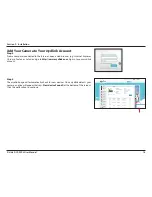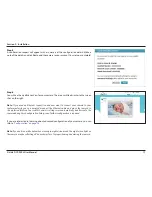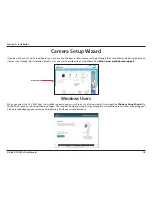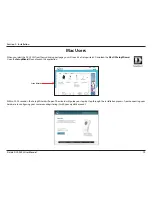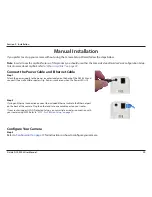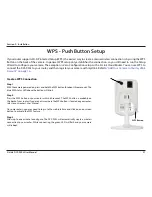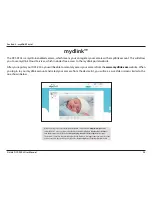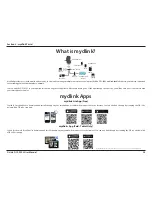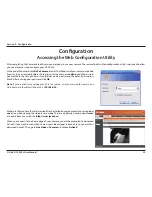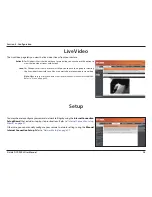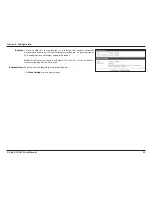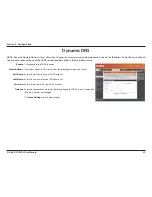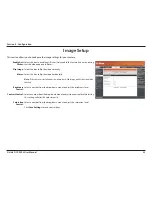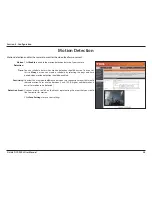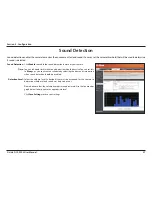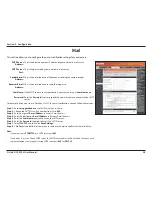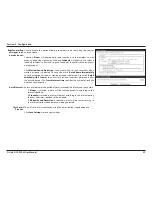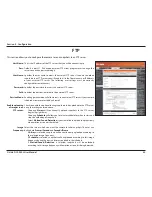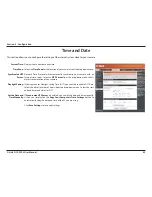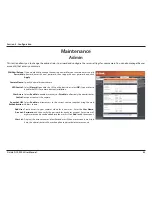
29
D-Link DCS-930L User Manual
Section 4 - Configuration
Network Setup
Select this connection if you have a DHCP server running on your network and
would like an IP address to be assigned to your camera automatically. If you
select DHCP, do not specify the IP address settings below.
Select this option for a fixed IP address. You may obtain a static IP address and
other network information from your network administrator for your camera. A
static IP address will simplify access to your camera in the future.
• IP Address:
Enter the fixed IP address for your camera.
• Subnet Mask:
The default value is “255.255.255.0.” Used to determine if the
destination is the same subnet as host devices.
• Default Gateway:
Enter the gateway address used to forward frames to
destinations in a different subnet. Invalid gateway settings may cause the
failure of transmissions.
If you are using a PPPoE connection, enable it and enter the
User Name
and
Password
for your PPPoE account. You can get this information from your
Internet service provider (ISP).
Enter the IP addresses for Primary and Secondary domain name servers if you
wish to use them. (The IP addresses can be obtained from your ISP.)
You may configure a Second HTTP port that will allow you to connect to
the camera via a standard web browser. The port can be set to a number
other than the default TCP ports 80. A corresponding port must be opened
on the router. For example, if the port is changed to 1010, users must type
http://192.168.0.100:1010
instead of only “http://192.168.0.100”.
Enable this setting to configure your camera as an UPnP (Universal Plug and
Play) device in the network.
Enable this to allow your camera to use UPnP to configure port forwarding on
your router.
DHCP:
Static IP Address:
PPPoE:
Primary/
Secondary DNS:
HTTP Port:
UPnP:
UPnP Port
Forwarding:
This section allows you to configure your network settings for your camera.


